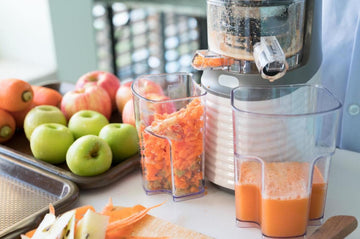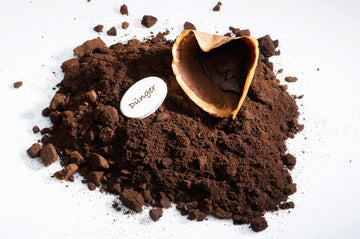If you've ever made a salad only to have watery lettuce leaves make your dressing taste bland and weak, you're definitely not alone. Wet greens are one of those annoying kitchen problems that can turn a perfectly good salad into a soggy disappointment. The solution is actually pretty straightforward: learning how to use a salad spinner properly.
A salad spinner might seem like just another kitchen gadget taking up counter space, but it's genuinely useful for getting excess water off your lettuce, spinach, and other leafy greens. When you remove that extra moisture, your dressings stick better, your salads taste fresher, and your greens actually last longer in the fridge. Plus, once you get the hang of using one, the whole process becomes second nature.
This guide will walk you through everything you need to know about using a salad spinner effectively. We'll cover the basics of how these devices work, step-by-step instructions for getting the best results, and even some alternative methods if you don't own one yet.
What is a salad spinner
A salad spinner is a kitchen tool designed specifically to remove excess water from freshly washed leafy greens and vegetables. The device consists of three main components: an outer bowl that catches the water, an inner perforated basket that holds your greens, and a lid with a spinning mechanism that creates centrifugal force.
The spinning mechanism varies depending on the model you choose. Some salad spinners use a pull cord system where you yank a string to get the basket rotating, while others have a pump-style handle that you press repeatedly. Higher-end models might feature a crank handle or even an easy-press button system. Regardless of the specific mechanism, they all work on the same basic principle of spinning the inner basket rapidly to force water out through the holes.
Most salad spinners are made from durable plastic materials, though you can find some with stainless steel components. The size typically ranges from small models that handle a few servings to large family-sized versions that can accommodate an entire head of lettuce. The perforated basket design allows water to escape while keeping your greens contained, and many models include measurement marks on the outer bowl for added convenience when preparing specific portions.
How to use a salad spinner

Using a salad spinner effectively involves several straightforward steps that maximize water removal while protecting your delicate greens from damage. The process begins with proper preparation and follows a specific sequence to achieve optimal results.
Start by thoroughly washing your lettuce or leafy greens under cold running water, making sure to remove any dirt, debris, or potential contaminants. Separate the leaves if you're working with head lettuce, and inspect each piece for damaged or wilted sections that should be discarded. Once your greens are clean, gently shake off the most obvious excess water before placing them in the spinner's perforated basket.
Load the basket without overpacking it, as overcrowding prevents proper water extraction and can damage the leaves. Fill the basket to roughly three-quarters capacity, allowing enough space for the greens to move freely during the spinning process. Place the loaded basket into the outer bowl, ensuring it sits properly and won't wobble during operation.
Secure the lid firmly and engage the spinning mechanism according to your specific model's design. For pull-cord models, give several quick, firm pulls to build up momentum. Pump-style handles require repeated pressing motions, while crank handles need steady, consistent turning. Spin for approximately ten to fifteen seconds initially, then check your results.
After the first spin cycle, remove the lid and gently redistribute the greens if they've clumped together. Empty the collected water from the outer bowl, then repeat the spinning process once or twice more until minimal water appears in the bottom bowl. This multi-cycle approach ensures thorough moisture removal without over-processing your delicate vegetables.
Alternatives to dry salad if you don't have the spinner
If you don't own a salad spinner, several household methods can effectively remove excess water from your freshly washed greens. These techniques require items you likely already have in your kitchen and can produce surprisingly good results.
The paper towel method remains one of the most reliable alternatives. After washing your greens, lay them out on clean paper towels and gently pat each leaf dry. For better results, place another layer of paper towels on top and press lightly to absorb moisture from both sides. This technique works particularly well for smaller quantities of delicate greens like arugula or baby spinach.
A clean kitchen towel offers a more sustainable approach than disposable paper towels. Spread your washed greens on a dry dish towel, then carefully roll the towel up with the greens inside. Gently squeeze and press the rolled towel to absorb water, then unroll and check your results. You may need to switch to a dry section of the towel or use a second towel for heavily wet greens.
The shake-and-air-dry method works well when you have time to spare. After washing, vigorously shake your greens in a colander or your hands to remove surface water, then spread them on a clean kitchen towel or cutting board. Allow them to air dry for 10-15 minutes, occasionally turning or rearranging the leaves to ensure even drying.
For emergency situations, a clean pillowcase can serve as an improvised salad spinner. Place your washed greens inside the pillowcase, twist the opening closed, and step outside to swing the pillowcase in large circles. The centrifugal force mimics a salad spinner's action, though this method requires outdoor space and can be messy if not done carefully.
Quick alternatives summary
-
Paper towel patting - best for small batches and delicate greens
-
Kitchen towel rolling - sustainable option for medium quantities
-
Shake and air dry - requires time but uses no additional materials
-
Pillowcase swinging - emergency outdoor method with centrifugal action
-
Colander shaking - removes surface water quickly before other drying methods
Salad spinner uses (besides, obviously drying salads)

Your salad spinner can handle far more kitchen tasks than you might expect. The combination of a perforated basket and spinning mechanism makes it surprisingly versatile for various food preparation needs beyond leafy greens.
Washing and drying other vegetables becomes much easier with a salad spinner. Broccoli and cauliflower florets, which have countless tiny crevices that trap dirt and water, clean up perfectly in a spinner. The same goes for leeks, which are notoriously sandy and difficult to clean thoroughly by hand. Bean sprouts, shredded cabbage, and fresh herbs all benefit from the gentle but effective cleaning action.
Preparing ingredients for fritters and latkes gets significantly easier when you use a salad spinner to remove excess moisture from grated potatoes, zucchini, or other vegetables. This step is crucial for achieving crispy results, and the spinner does a better job than wringing vegetables in kitchen towels.
Dried beans and legumes can be soaked and rinsed efficiently in a salad spinner. The large bowl capacity works well for soaking, while the perforated basket makes it easy to drain and rinse without losing any beans down the drain. This method also helps you spot and remove any small stones or debris mixed in with dried beans.
Fresh berries require gentle handling during washing, and a salad spinner provides the perfect solution. Strawberries, blueberries, and raspberries can be cleaned without bruising, then spun dry to remove excess water that would otherwise make them soggy or dilute their flavor.
The individual components serve additional purposes when separated. The large bowl works as extra prep space for mixing ingredients or soaking rice paper for spring rolls. The clear lid can cover rising bread dough, allowing you to monitor progress without disturbing the process.
Some creative cooks even use their salad spinners for non-food items like gently removing excess water from delicate kitchen towels, cheesecloth, or even small swimsuits and toys after pool time.
Getting the most from your salad spinner
Learning how to use a salad spinner properly transforms your kitchen routine in ways that extend far beyond just making better salads. The difference between soggy, waterlogged greens and perfectly crisp, dry leaves affects everything from how well your dressings adhere to how long your prepared ingredients stay fresh in the refrigerator.
Whether you invest in a dedicated salad spinner or make do with alternative drying methods, the key lies in understanding that removing excess moisture is a crucial step that shouldn't be rushed or skipped. The few extra minutes spent properly drying your greens pays off in better-tasting meals and reduced food waste.
As you become more comfortable with the process, you'll likely discover your own preferred techniques and timing. Some people prefer multiple short spins, while others find one longer session works better for their needs. The versatility of salad spinners also means you'll probably find yourself reaching for this tool more often than you initially expected, making it a worthwhile addition to most kitchens.
Frequently asked questions
Can you put a salad spinner in the dishwasher?
Most salad spinners are dishwasher-safe, but you should check the manufacturer's instructions first. The outer bowl and perforated basket typically handle dishwasher cleaning well, but the lid mechanism may require hand washing to preserve the spinning components. Some models have removable spinning mechanisms that can be taken apart for thorough cleaning.
How do you store greens after using a salad spinner to keep them fresh longer?
After spinning your greens dry, store them in the refrigerator with a paper towel or clean kitchen towel to absorb any remaining moisture. You can keep them in the salad spinner bowl itself, in airtight containers, or in produce bags with small holes for air circulation. Properly dried and stored greens typically stay fresh for 5-7 days longer than wet ones.
Why do my greens still seem wet after multiple spins in the salad spinner?
This usually happens when the spinner is overloaded or the greens are particularly thick and water-retentive. Try processing smaller batches, ensuring the basket isn't packed too tightly, and consider the type of greens you're working with. Dense vegetables like kale or thick romaine leaves may need longer spinning times or benefit from being torn into smaller pieces before spinning.





